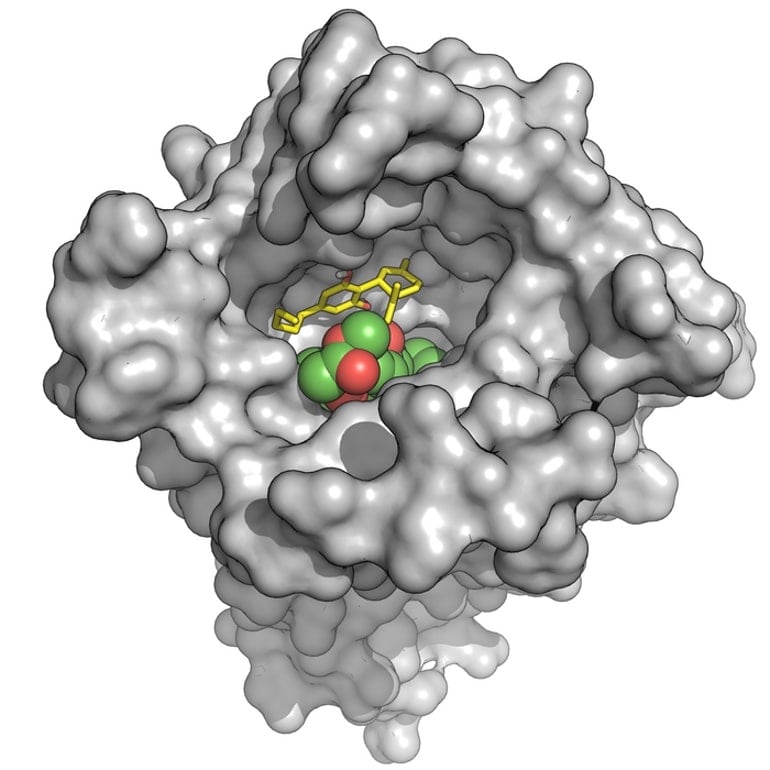
Summary: Compounds primarily based on CBD can reduce fentanyl opioid binding and strengthen the effects of naloxone, a rapid-performing opioid antidote.
Source: American Chemical Modern society
There is been a recent force in the U.S. to make naloxone — a rapidly-performing opioid antidote — obtainable without the need of a prescription. This treatment has saved life, but it is fewer powerful in opposition to highly effective synthetic opioids, these kinds of as fentanyl.
In an appealing twist, researchers are now wanting to cannabidiol (CBD), a component of cannabis, as a achievable option to the preferred antidote. Nowadays, a staff reports compounds centered on CBD that lower fentanyl binding and raise the results of naloxone.
The researchers will present their success at the spring assembly of the American Chemical Culture (ACS). ACS Spring 2023 is a hybrid conference currently being held practically and in-particular person March 26–30, and attributes much more than 10,000 displays on a huge selection of science matters.
“Fentanyl-class compounds account for more than 80{d589daddaa72454dba3eae1d85571f5c49413c31a8b21559e51d970df050cb0e} of opioid overdose deaths, and these compounds are not going any place — it’s just as well considerably of an economic temptation for dealers,” states Alex Straiker, Ph.D., the project’s co-principal investigator. “Given that naloxone is the only drug accessible to reverse overdoses, I consider it would make perception to search at alternate options.”
A new solution could take one of two types, in accordance to Michael VanNieuwenhze, Ph.D., the other co-principal investigator for the task.
“Ideally, we would like to find a much more potent alternative for naloxone,” VanNieuwenhze says. “However, discovering something that is effective synergistically with it, lowering the total wanted to treat an overdose, would also be a success.”
Jessica Gudorf, a graduate scholar in VanNieuwenhze’s team, is presenting the operate at the assembly. All of the researchers are at Indiana University Bloomington.
Opioids are a course of compounds that are prescribed to treat agony and are occasionally marketed illegally. If taken in excessive, the medication can interfere with breathing, generating them perhaps deadly. The U.S. Centers for Condition Management and Avoidance estimates that a lot more than fifty percent a million individuals died from overdoses involving opioids in between 1999 and 2020. That toll continues to climb.
In comparison to other compounds in this class, these kinds of as heroin or morphine, fentanyl and its other synthetic family bind far more tightly to opioid receptors in the mind. Naloxone reverses an overdose by competing with the drug molecules for the exact binding web sites on the receptors. But due to the fact fentanyl binds so readily, it has a leg up on naloxone, and developing evidence implies that reversing these types of overdoses may well require several doses of the antidote.
At this point, researchers have exhaustively studied the technique naloxone normally takes, but they have however to discover any way to make improvements to on its performance, Gudorf says. “Our work opens the doorway to making new blockers that get the job done by means of a diverse system,” she explains.
Earlier investigate suggesting that CBD can interfere with opioid binding influenced the present-day effort. In analysis revealed in 2006, a group based mostly in Germany concluded that CBD hampered opioid binding indirectly, by altering the condition of the receptor. When used with naloxone, they observed CBD accelerated the medication’s outcome, forcing the receptors to launch opioids.

To augment these results, Gudorf altered CBD’s structure to crank out derivatives. Taryn Bosquez-Berger, a graduate university student in Straiker’s group, tested these new compounds in cells with a material termed DAMGO, an opioid utilised only in lab scientific studies. To evaluate their accomplishment, she monitored a molecular signal that diminishes when this type of drug binds. Armed with comments from these experiments, Gudorf refined the buildings she produced.
In the conclusion, they narrowed the area to 15, which they analyzed at various concentrations against fentanyl, with and with out naloxone. A number of derivatives could decrease fentanyl binding even at what Bosquez-Berger described as “incredibly low” concentrations, even though also outperforming naloxone’s opioid-blocking general performance. Two of these also confirmed a synergistic impact when put together with the antidote.
The group has due to the fact begun screening the most effective derivatives in mice. In these experiments, they are investigating whether these compounds alter behaviors involved with using fentanyl.
“We hope our tactic potential customers to the start of new therapeutics, which, in the hands of unexpected emergency staff, could save even additional life,” Bosquez-Berger suggests.
Funding: The researchers accept aid and funding from the Indiana University Grand Difficulties Software.
About this neuropharmacology research news
Author: Katie Cottingham
Supply: American Chemical Culture
Speak to: Katie Cottingham – American Chemical Modern society
Image: The impression is credited to Charles Kuntz
First Research: The findings will be offered at the ACS Spring 2023

/cloudfront-us-east-1.images.arcpublishing.com/gray/TAXROKCH5ZC2XG25VM5QIDVAWU.jpg)





